
Keywords: Aedes aegypti
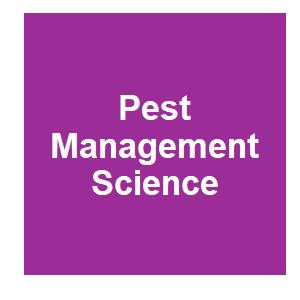
|
Economic optimization of Wolbachia-infected Aedes aegypti release to prevent dengueHollingsworth BD, Cho C, Vella M, Roh H, Sass J, Lloyd AL, Brown ZS., Pest Management Science, 2024.
Dengue virus, primarily transmitted by the Aedes aegypti mosquito, is a major public health concern affecting ≈3.83 billion people worldwide. Recent releases of Wolbachia-transinfected Ae. aegypti in several cities worldwide have shown that it can reduce dengue transmission. ... Keywords: Aedes aegypti, integrated vector management, Mosquito control, radiation, sex sorting, transgenics, wolbachia |
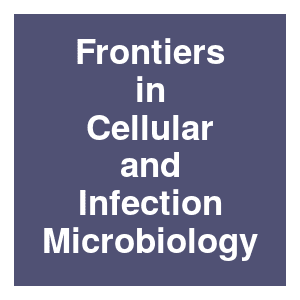
|
Detection and quantification of natural Wolbachia in Aedes aegypti in Metropolitan Manila, Philippines using locally designed primersReyes JIL, Suzuki T, Suzuki Y, Watanabe K., Frontiers in Cellular and Infection Microbiology, 2024.
The Philippines bears health and economic burden caused by high dengue cases annually. Presently, the Philippines still lack an effective and sustainable vector management. The use of Wolbachia, a maternally transmitted bacterium, that mitigate arbovirus transmission has been ... Keywords: Aedes aegypti, integrated vector management, Mosquito control, radiation, sex sorting, transgenics, wolbachia |

|
Monitoring Aedes populations for arboviruses, Wolbachia, insecticide resistance and its mechanisms in various agroecosystems in BeninS. Ateutchia-Ngouanet, F. Nanfack-Minkeu, K. Mavridis, S. Wanji, M. Demanou, J. Vontas, R. Djouaka, Acta Tropica, 253. 2024.
The susceptibility of arbovirus vectors to insecticides and the microbiome of Aedes species are understudied in Benin. Keywords: Aedes aegypti, integrated vector management, Mosquito control, radiation, sex sorting, transgenics, wolbachia |

|
Wolbachia strain wAlbB shows favourable characteristics for dengue control use in Aedes aegypti from Burkina FasoMaria Vittoria Mancini, Shivan M. Murdochy, Etienne Bilgo, Thomas H. Ant, Daniel Gingell, Edounou Jacques Gnambani, Anna-Bella Failloux, Abdoulaye Diabate, Steven P. Sinkins, Environmental Microbiology, 26. 2024.
Dengue represents an increasing public health burden worldwide. Keywords: Aedes aegypti, integrated vector management, Mosquito control, radiation, sex sorting, transgenics, wolbachia |

|
Quantifying Fitness Costs in Transgenic Aedes aegypti MosquitoesWilliams, A. E., Sanchez-Vargas, I., Martin, L. E., Martin-Martin, I., Bennett, S., Olson, K. E., Calvo, E., The Journal of Visualized Experiments, 199. 2024.
The present protocol describes how to measure common life parameter data in Aedes aegypti mosquitoes, including fecundity, wing size, fertility, sex ratio, viability, development times, male contribution, and adult longevity. Keywords: Aedes aegypti, integrated vector management, Mosquito control, radiation, sex sorting, transgenics, wolbachia |
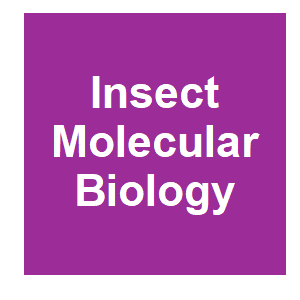
|
Alpha-mannosidase-2 modulates arbovirus infection in a pathogen- and Wolbachia-specific manner in Aedes aegypti mosquitoesNadya Urakova, Renuka E. Joseph, Allyn Huntsinger, Vanessa M. Macias, Matthew J. Jones, Leah T. Sigle, Ming Li, Omar S. Akbari, Zhiyong Xi, Konstantinos Lymperopoulos, Richard T. Sayre, Elizabeth A. McGraw, Jason L. Rasgon, Insect Molecular Biology, 2024.
Multiple Wolbachia strains can block pathogen infection, replication and/or transmission in Aedes aegypti mosquitoes under both laboratory and field conditions. Keywords: Aedes aegypti, integrated vector management, Mosquito control, radiation, sex sorting, transgenics, wolbachia |

|
Brazil’s record dengue surge: why a vaccine campaign is unlikely to stop itMariana Lenharo, Nature, 2024.
A vaccine shortage and persistent sanitation problems threaten the success of the world’s first public vaccination campaign against dengue virus. Keywords: Aedes aegypti, integrated vector management, Mosquito control, radiation, sex sorting, transgenics, wolbachia |

|
Acceptability of emergent Aedes aegypti vector control methods in Ponce, Puerto Rico: A qualitative assessmentPérez-Guerra CL, Rosado-Santiago C, Ramos SA, Marrero-Santos KM, González-Zeno G, Partridge SK, et al., PLoS Global Public Health, 2024.
Aedes aegypti control has been fraught with challenges in Puerto Rico. The government has implemented commonly used vector control methods, but arboviral epidemics still occur. It is necessary to explore new Ae. aegypti control methods. This study aimed to understand the ... Keywords: Aedes aegypti, integrated vector management, Mosquito control, radiation, sex sorting, transgenics, wolbachia |

|
Efficacy of Wolbachia-based mosquito control: Predictions of a spatially discrete mathematical modelDavid Dye, John W. Cain, PLoS One, 19. 2024.
Wolbachia is an endosymbiont bacterium present in many insect species. When Wolbachia-carrying male Aedes aegypti mosquitoes mate with non-carrier females, their embryos are not viable due to cytoplasmic incompatibility. This phenomenon has been exploited successfully for the ... Keywords: Aedes aegypti, integrated vector management, Mosquito control, radiation, sex sorting, transgenics, wolbachia |

|
Aedes aegypti Controls Ae. aegypti: SIT and IIT—An OverviewRobert L. Aldridge; Seth Gibson; Kenneth J. Linthicum, Journal of the American Mosquito Control Association, 20:32-49. 2024.
The sterile insect technique (SIT) and the incompatible insect technique (IIT) are emerging and potentially revolutionary tools for controlling Aedes aegypti (L.), a prominent worldwide mosquito vector threat to humans that is notoriously difficult to reduce or eliminate in ... Keywords: Aedes aegypti, integrated vector management, Mosquito control, radiation, sex sorting, transgenics, wolbachia |

|
DENV-1 Titer Impacts Viral Blocking in wMel Aedes aegypti with Brazilian Genetic BackgroundCorrêa-Antônio, Jessica, Mariana R. David, Dinair Couto-Lima, Gabriela Azambuja Garcia, Milan S. G. Keirsebelik, Rafael Maciel-de-Freitas, and Márcio Galvão Pavan., Viruses, 16. 2024.
Several countries have been using Wolbachia deployments to replace highly competent native Aedes aegypti populations with Wolbachia-carrying mosquitoes with lower susceptibility to arboviruses such as dengue, Zika, and chikungunya. In Rio de Janeiro, Wolbachia deployments started ... Keywords: Aedes aegypti, integrated vector management, Mosquito control, radiation, sex sorting, transgenics, wolbachia |

|
Mosquito Control releases over 100K sterile male mosquitos to combat Aedes aegypti populationNBC2 News, YouTube, 2024.
Mosquito Control releases over 100K sterile male mosquitos to combat Aedes aegypti population Keywords: Aedes aegypti, integrated vector management, Mosquito control, radiation, sex sorting, transgenics, wolbachia |

|
Gene Drive Systems To Control Aedes Aegypti Mosquitoes Make HeadwayJoshua Ang, Outreach Network for Gene Drive Research, 2024.
Aedes aegypti mosquitoes are known vectors of several diseases, including dengue, chikungunya, yellow fever, and Zika, which impact millions of people worldwide each year. The effectiveness of existing insecticide-based methods to control this mosquito is threatened by growing ... Keywords: Aedes aegypti, integrated vector management, Mosquito control, radiation, sex sorting, transgenics, wolbachia |

|
New gene-editing tools may help wipe out mosquito-borne diseasesGreg Allen, NPR, 2024.
In the age-old war of human versus mosquitoes, the bugs have been winning. At least 700,000 people die every year from mosquito-borne diseases such as malaria, dengue, West Nile and yellow fever. Global trade and climate change have helped disease-carrying species become ... Keywords: Aedes aegypti, integrated vector management, Mosquito control, radiation, sex sorting, transgenics, wolbachia |

|
A multiplexed, confinable CRISPR/Cas9 gene drive can propagate in caged Aedes aegypti populationsAnderson, M.A.E., Gonzalez, E., Edgington, M.P. et al., Nature Communications, 15. 2024.
Aedes aegypti is the main vector of several major pathogens including dengue, Zika and chikungunya viruses. Classical mosquito control strategies utilizing insecticides are threatened by rising resistance. This has stimulated interest in new genetic systems such as gene ... Keywords: Aedes aegypti, integrated vector management, Mosquito control, radiation, sex sorting, transgenics, wolbachia |

|
Engineered Antiviral Sensor Targets Infected MosquitoesElena Dalla Benetta, Adam J. López-Denman, Hsing-Han Li, Reem A. Masri, Daniel J. Brogan, Michelle Bui, Ting Yang, Ming Li, Michael Dunn, Melissa J. Klein, Sarah Jackson, Kyle Catalan, Kim R. Blasdell, Priscilla Tng, Igor Antoshechkin, Luke S. Alphey, Pra, The CRISPR Journal, 6:543-556. 2024.
Escalating vector disease burdens pose significant global health risks, as such innovative tools for targeting mosquitoes are critical. CRISPR-Cas technologies have played a crucial role in developing powerful tools for genome manipulation in various eukaryotic organisms. ... Keywords: Aedes aegypti, integrated vector management, Mosquito control, radiation, sex sorting, transgenics, wolbachia |

|
Maxizyme-mediated suppression of chikungunya virus replication and transmission in transgenic Aedes aegypti mosquitoesMishra P, Balaraman V, Fraser Jr. M, Frontiers in Microbiology, 14. 2024.
Chikungunya virus (CHIKV) is an emerging mosquito-borne pathogen of significant public health importance. There are currently no prophylactic vaccines or therapeutics available to control CHIKV. One approach to arbovirus control that has been proposed is the replacement of ... Keywords: Aedes aegypti, integrated vector management, Mosquito control, radiation, sex sorting, transgenics, wolbachia |

|
Mosquito makeover: Tahiti’s groundbreaking solution to diseaseAtutahi Potaka-Dewes, Pacific Media Network, 2024.
Mosquitoes are responsible for transmitting such diseases as dengue, malaria, zika, chikungunya, or filariosis, causing millions of deaths worldwide. French Polynesia is taking a groundbreaking initiative to address public health concerns and demonstrate a commitment to finding ... Keywords: Aedes aegypti, integrated vector management, Mosquito control, radiation, sex sorting, transgenics, wolbachia |

|
Antiviral Wolbachia strains associate with Aedes aegypti endoplasmic reticulum membranes and induce lipid droplet formation to restrict dengue virus replicationRobson K. Loterio, Ebony A. Monson, Rachel Templin, Jyotika T. de Bruyne, Heather A. Flores, Jason M. Mackenzie, Georg Ramm, Karla J. Helbig, Cameron P. Simmons, Johanna E. Fraser, Applied and Environmental Microbiology, 2023.
Wolbachia are a genus of insect endosymbiotic bacteria which includes strains wMel and wAlbB that are being utilized as a biocontrol tool to reduce the incidence of Aedes aegypti-transmitted viral diseases like dengue. However, the precise mechanisms underpinning the antiviral ... Keywords: Aedes aegypti, integrated vector management, Mosquito control, radiation, sex sorting, transgenics, wolbachia |

|
Rapid turnover of pathogen-blocking Wolbachia and their incompatibility lociShropshire JD, Conner WR, Vanderpool D, Hoffmann AA, Turelli M, Cooper BS., bioRxiv, 2023.
At least half of all insect species carry maternally inherited Wolbachia alphaproteobacteria, making Wolbachia the most common endosymbionts in nature. Wolbachia spread to high frequencies is often due to cytoplasmic incompatibility (CI), a Wolbachia -induced sperm modification ... Keywords: Aedes aegypti, integrated vector management, Mosquito control, radiation, sex sorting, transgenics, wolbachia |

|
Procesos celulares modificados en Aedes aegypti infectados con Wolbachia y la susceptibilidad al virus dengueLópez-Ordóñez T, Díaz-Rodarte KI, Torres-Monzón JA, Casas-Martínez M, Danis-Lozano R, Mosso-González C., Salud Pública de México, 2023.
Objetivo: Analizar la expresión diferencial de proteínas de Aedes aegypti infectados con Wolbachia y su asociación con el ciclo viral del virus dengue (DENV). Material y métodos. Se revisó una base de datos de proteínas de Ae. aegypti infec-tados y no infectados con ... Keywords: Aedes aegypti, integrated vector management, Mosquito control, radiation, sex sorting, transgenics, wolbachia |

|
Aerial release of Aedes aegypti male mosquitoes using an unmanned aerial vehicle: a novel control strategyValdez-Delgado KM, Ríos-Delgado JC, Nettel-Cruz JA, Angulo-Kladt R, Villarreal-Treviño C., Salud Pública de México, 65. 2023.
Objective. To development of a methodology for the chilling, handling, transport, and release of male Aedes aegypti mosquitoes, reared in insectary conditions to release in the field with unmanned vehicles to compete sexually with wild males in the field. Materials and methods. A ... Keywords: Aedes aegypti, integrated vector management, Mosquito control, radiation, sex sorting, transgenics, wolbachia |

|
Rapid turnover of pathogen-blocking Wolbachia and their incompatibility lociDylan Shropshire, William R. Conner, Daniel Vanderpool, Ary A. Hoffmann, Michael Turelli, Brandon S. Cooper, bioRxiv, 2023.
At least half of all insect species carry maternally inherited Wolbachia alphaproteobacteria, making Wolbachia the most common endosymbionts in nature. Wolbachia spread to high frequencies is often due to cytoplasmic incompatibility (CI), a Wolbachia-induced sperm modification ... Keywords: Aedes aegypti, integrated vector management, Mosquito control, radiation, sex sorting, transgenics, wolbachia |
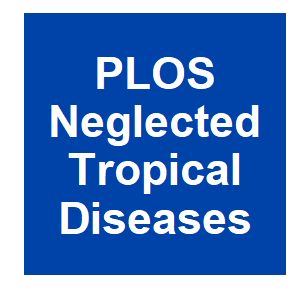
|
Reduced dengue incidence following city-wide wMel Wolbachia mosquito releases throughout three Colombian cities: Interrupted time series analysis and a prospective case-control studyVelez ID, Tanamas SK, Arbelaez MP, Kutcher SC, Duque SL, Uribe A, et al., PLoS Neglected Tropical Diseases, 2023.
The introduction of Wolbachia (wMel strain) into Aedes aegypti mosquitoes reduces their capacity to transmit dengue and other arboviruses. Randomised and non-randomised studies in multiple countries have shown significant reductions in dengue incidence following field ... Keywords: Aedes aegypti, integrated vector management, Mosquito control, radiation, sex sorting, transgenics, wolbachia |

|
Large-scale releases and establishment of wMel Wolbachia in Aedes aegypti mosquitoes throughout the Cities of Bello, Medellín and Itagüí, ColombiaVelez ID, Uribe A, Barajas J, Uribe S, Ángel S, Suaza-Vasco JD, et al., PLoS Neglected Tropical Diseases, 2023.
The wMel strain of Wolbachia has been successfully introduced into Aedes aegypti mosquitoes and has been shown to reduce the transmission of dengue and other Aedes-borne viruses. Here we report the entomological results from phased, large-scale releases ... Keywords: Aedes aegypti, integrated vector management, Mosquito control, radiation, sex sorting, transgenics, wolbachia |
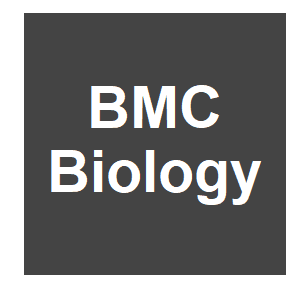
|
Different mechanisms of X-ray irradiation-induced male and female sterility in Aedes aegyptiZhang, H., Trueman, E., Hou, X. et al., BMC Biology, 21. 2023.
Aedes aegypti (Ae. aegypti) is the major vector that transmits many diseases including dengue, Zika, and filariasis in tropical and subtropical regions. Due to the growing resistance to chemical-based insecticides, biological control methods have become an emerging direction to ... Keywords: Aedes aegypti, integrated vector management, Mosquito control, radiation, sex sorting, transgenics, wolbachia |

|
Efficient sex separation by exploiting differential alternative splicing of a dominant marker in Aedes aegyptiShih-Che Weng, Igor Antoshechkin, Eric Marois, Omar S. Akbari, PLoS Genetics, 2023.
Only female mosquitoes consume blood giving them the opportunity to transmit deadly human pathogens. Therefore, it is critical to remove females before conducting releases for genetic biocontrol interventions. Here we describe a robust sex-sorting approach termed SEPARATOR ... Keywords: Aedes aegypti, integrated vector management, Mosquito control, radiation, sex sorting, transgenics, wolbachia |

|
Utility of surveillance data for planning for dengue elimination in Yogyakarta, Indonesia: a scenario-tree modelling approachMelanie Bannister-Tyrrell, Alison Hillman, Citra Indrian, Riris Andono Ahmad, Adi Utarini, Cameron P Simmons, Katherine L Anders, Evan Sergeant, BMJ Global Health, 8. 2023.
Field trials and modelling studies suggest that elimination of dengue transmission may be possible through widespread release of Aedes aegypti mosquitoes infected with the insect bacterium Wolbachia pipientis (wMel strain), in conjunction with routine dengue control activities. ... Keywords: Aedes aegypti, integrated vector management, Mosquito control, radiation, sex sorting, transgenics, wolbachia |

|
Wolbachia -mediated resistance to Zika virus infection in Aedes aegypti is dominated by diverse transcriptional regulation and weak evolutionary pressuresE. C. Boehm, A. S. Jaeger, H. J. Ries, D. Castañeda, A. M. Weiler, C. C. Valencia, J. Weger-Lucarelli, G. D. Ebel, S. L. O'Connor, T. C. Friedrich, M. Zamanian and M. T. Aliota, bioRxiv, 2023.
A promising candidate for arbovirus control and prevention relies on replacing arbovirus-susceptible Aedes aegypti populations with mosquitoes that have been colonized by the intracellular bacterium Wolbachia and thus have a reduced capacity to transmit arboviruses. This reduced ... Keywords: Aedes aegypti, integrated vector management, Mosquito control, radiation, sex sorting, transgenics, wolbachia |

|
Genetically Engineered Mosquito experiment in California’s Central Valley haltedH. Bourque, Friends of the Earth, 2023.
In a victory for environmentalists, scientists and vulnerable agricultural communities across California, the California Department of Pesticide Regulation (DPR) announced yesterday the withdrawal of a permit request for a mass release of experimental genetically engineered ... Keywords: Aedes aegypti, integrated vector management, Mosquito control, radiation, sex sorting, transgenics, wolbachia |

|
updated: Genetically Engineered Mosquitoes Research Authorization ApplicationCalifornia Department of Pesticide Regulation, California Department of Pesticide Regulation,, 2023.
In May 2023, Oxitec voluntarily withdrew its research authorization application to test the use of genetically engineered mosquitoes in California. DPR did not issue a decision on the application. For more information on Oxitec’s withdrawal and future plans for research in ... Keywords: Aedes aegypti, integrated vector management, Mosquito control, radiation, sex sorting, transgenics, wolbachia |
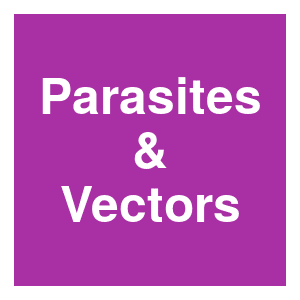
|
Enhancing the scalability of Wolbachia-based vector-borne disease management: time and temperature limits for storage and transport of Wolbachia-infected Aedes aegypti eggs for field releasesM. J. Allman, Y. H. Lin, D. A. Joubert, J. Addley-Cook, M. C. Mejía-Torres, C. P. Simmons, H. A. Flores and J. E. Fraser, Parasit Vectors, 16:108. 2023.
BACKGROUND: Introgression of the bacterial endosymbiont Wolbachia into Aedes aegypti populations is a biocontrol approach being used to reduce arbovirus transmission. This requires mass release of Wolbachia-infected mosquitoes. While releases have been conducted using a variety ... Keywords: Aedes aegypti, integrated vector management, Mosquito control, radiation, sex sorting, transgenics, wolbachia |

|
Galapagos to receive male mosquitoes for vector control in EcuadorA. R. Martin, Prensa Latina, 2023.
The Galapagos Islands will receive 100,000 sterile male mosquitoes as part of a new vector control strategy in Ecuador, the Center for Research in Infectious and Vector Diseases (CIREV) announced. Reducing the Aedes aegypti in Ecuador is in charge of the National Institute for ... Keywords: Aedes aegypti, integrated vector management, Mosquito control, radiation, sex sorting, transgenics, wolbachia |

|
Analysing inhibition of dengue virus in Wolbachia-infected mosquito cells following the removal of WolbachiaM. Hussain, K. Etebari and S. Asgari, Virology, 581:48-55. 2023.
Wolbachia pipientis is known to block replication of positive sense RNA viruses. Previously, we created an Aedes aegypti Aag2 cell line (Aag2.wAlbB) transinfected with the wAlbB strain of Wolbachia and a matching tetracycline-cured Aag2.tet cell line. While dengue virus (DENV) ... Keywords: Aedes aegypti, integrated vector management, Mosquito control, radiation, sex sorting, transgenics, wolbachia |
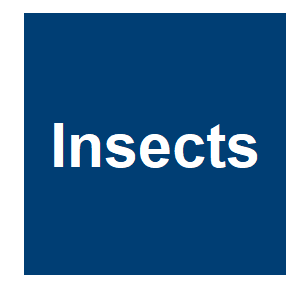
|
From the Lab to the Field: Long-Distance Transport of Sterile Aedes MosquitoesH. Maïga, M. T. Bakhoum, W. Mamai, G. Diouf, N. S. Bimbilé Somda, T. Wallner, C. Martina, S. S. Kotla, O. B. Masso, H. Yamada, B. B. D. Sow, A. G. Fall and J. Bouyer, Insects, 14. 2023.
Pilot programs of the sterile insect technique (SIT) against Aedes aegypti may rely on importing significant and consistent numbers of high-quality sterile males from a distant mass rearing factory. As such, long-distance mass transport of sterile males may contribute to meet ... Keywords: Aedes aegypti, integrated vector management, Mosquito control, radiation, sex sorting, transgenics, wolbachia |
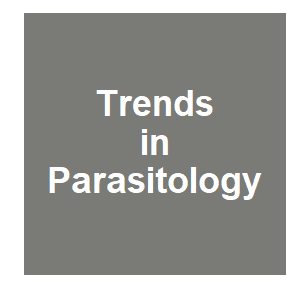
|
When less is more: accounting for overcompensation in mosquito SIT projectsJ. Bouyer, Trends in Parasitology, 2023.
Compensation and overcompensation under field conditions are confirmed in Aedes mosquitoes recently by Evans et al.: equal or increased densities of emerging adults may thus result from reduced larval densities. Here the consequences when applying the sterile insect technique and ... Keywords: Aedes aegypti, integrated vector management, Mosquito control, radiation, sex sorting, transgenics, wolbachia |

|
Biological comparative study between Wolbachia-infected Aedes aegypti mosquito and Wolbachia-uninfected strain, Jeddah city, Saudi ArabiaA. G. Algamdi, F. M. Shaher and J. A. Mahyoub, Saudi J Biol Sci, 30:103581. 2023.
In this study, samples of Wolbachia-infected Aedes aegypti mosquitoes were collected from Al-Safa district in Jeddah city, Saudi Arabia. The presence of Wolbachia bacteria in mosquitoes was confirmed by PCR technique and they were reared and propagated in the laboratory. ... Keywords: Aedes aegypti, integrated vector management, Mosquito control, radiation, sex sorting, transgenics, wolbachia |
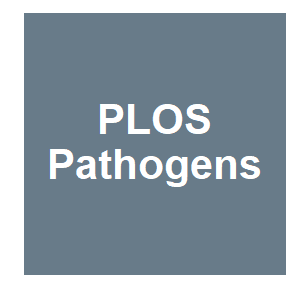
|
Developing Wolbachia-based disease interventions for an extreme environmentP. A. Ross, S. Elfekih, S. Collier, M. J. Klein, S. S. Lee, M. Dunn, S. Jackson, Y. Zhang, J. K. Axford, X. Gu, J. L. Home, M. S. Nassar, P. N. Paradkar, E. A. Tawfik, F. M. Jiggins, A. M. Almalik, M. B. Al-Fageeh and A. A. Hoffmann, PLoS Pathogens, 19:e1011117. 2023.
Aedes aegypti mosquitoes carrying self-spreading, virus-blocking Wolbachia bacteria are being deployed to suppress dengue transmission. However, there are challenges in applying this technology in extreme environments. We introduced two Wolbachia strains into Ae. aegypti from ... Keywords: Aedes aegypti, integrated vector management, Mosquito control, radiation, sex sorting, transgenics, wolbachia |

|
Survival-Larval Density Relationships in the Field and Their Implications for Control of Container-Dwelling Aedes MosquitoesK. G. Evans, Z. R. Neale, B. Holly, C. C. Canizela and S. A. Juliano, Insects, 14. 2022.
Population density can affect survival, growth, development time, and adult size and fecundity, which are collectively known as density-dependent effects. Container Aedes larvae often attain high densities in nature, and those densities may be reduced when larval control is ... Keywords: Aedes aegypti, integrated vector management, Mosquito control, radiation, sex sorting, transgenics, wolbachia |
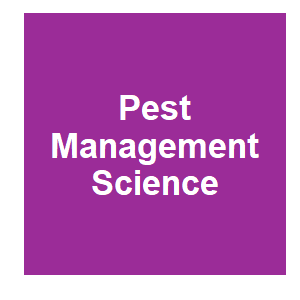
|
Developing radiation-based sterile insect technique (SIT) for controlling Aedes aegypti: identification of a sterilizing doseC. Chen, R. L. Aldridge, S. Gibson, J. Kline, V. Aryaprema, W. Qualls, R.-d. Xue, L. Boardman, K. J. Linthicum and D. A. Hahn, Pest Management Science, 2022.
Abstract Background The sterile insect technique (SIT) is emerging as a tool to supplement traditional pesticide-based control of Aedes aegypti, a prominent mosquito vector of microbes that have increased the global burden of human morbidity and mortality over the past 50?years. ... Keywords: Aedes aegypti, integrated vector management, Mosquito control, radiation, sex sorting, transgenics, wolbachia |

|
A CRISPR endonuclease gene drive reveals distinct mechanisms of inheritance biasS. A. N. Verkuijl, E. Gonzalez, M. Li, J. X. D. Ang, N. P. Kandul, M. A. E. Anderson, O. S. Akbari, M. B. Bonsall and L. Alphey, Nature Communications, 13:7145. 2022.
CRISPR/Cas gene drives can bias transgene inheritance through different mechanisms. Homing drives are designed to replace a wild-type allele with a copy of a drive element on the homologous chromosome. In Aedes aegypti, the sex-determining locus is closely linked to the white ... Keywords: Aedes aegypti, integrated vector management, Mosquito control, radiation, sex sorting, transgenics, wolbachia |

|
Monotonicity properties arising in a simple model of Wolbachia invasion for wild mosquito populationsD. Vicencio, O. Vasilieva and P. Gajardo, Mathematical Biosciences and Engineering, 20:1148-1175. 2022.
Using tools borrowed from monotone dynamical system theory, in the proposed model, we prove the existence of an invariant threshold manifold that allows us to provide practical recommendations for performing single and periodic releases of Wolbachia-carrying mosquitoes, seeking ... Keywords: Aedes aegypti, integrated vector management, Mosquito control, radiation, sex sorting, transgenics, wolbachia |

|
Studies on the fitness characteristics of wMel- and wAlbB-introgressed Aedes aegypti (Pud) lines in comparison with wMel- and wAlbB-transinfected Aedes aegypti (Aus) and wild-type Aedes aegypti (Pud) linesC. Sadanandane, K. Gunasekaran, D. Panneer, S. K. Subbarao, M. Rahi, B. Vijayakumar, V. Athithan, A. Sakthivel, S. Dinesh and P. Jambulingam, Frontiers in Microbiology, 13:947857. 2022.
Wolbachia, an intracellular maternally transmitted endosymbiont, has been shown to interfere with the replication of dengue virus in Aedes aegypti mosquitoes. The Wolbachia-transinfected Ae. aegypti has been currently released in many countries to test its effectiveness in ... Keywords: Aedes aegypti, integrated vector management, Mosquito control, radiation, sex sorting, transgenics, wolbachia |

|
Release the Beast? Genetically modified mosquitos for diease controlG. Ferrante, Palatinate, 2022.
The company Oxitec is an example how genetic technologies can be used in managing unwanted species in a sustainable way.Oxitec jumped to the headlines in March with permits being issued by the United States Environmental Protection Agency (EPA) to allow the release of around 2.4 ... Keywords: Aedes aegypti, integrated vector management, Mosquito control, radiation, sex sorting, transgenics, wolbachia |

|
Developing Wolbachia-based disease interventions for an extreme environmentP. A. Ross, S. Elfekih, S. Collier, M. J. Klein, S. S. Lee, M. Dunn, S. Jackson, Y. Zhang, J. K. Axford, X. Gu, M. S. Nasar, P. N. Paradkar, E. A. Taoufik, F. M. Jiggins, A. M. Almalik, M. B. Al-Fageeh and A. A. Hoffmann, bioRxiv, 2022.07.26.501527. 2022.
Aedes aegypti mosquitoes carrying self-spreading, virus-blocking Wolbachia bacteria are being deployed to suppress dengue transmission. However, there are challenges in applying this technology in extreme environments. We introduced two Wolbachia strains into Ae. aegypti from ... Keywords: Aedes aegypti, integrated vector management, Mosquito control, radiation, sex sorting, transgenics, wolbachia |

|
Attempts to use breeding approaches in Aedes aegypti to create lines with distinct and stable relative Wolbachia densitiesA. J. Mejia, L. Jimenez, H. L. C. Dutra, R. Perera and E. A. McGraw, Heredity, 2022.
Wolbachia is an insect endosymbiont being used for biological control in the mosquito Aedes aegypti because it causes cytoplasmic incompatibility (CI) and limits viral replication of dengue, chikungunya, and Zika viruses. While the genetic mechanism of pathogen blocking (PB) is ... Keywords: Aedes aegypti, integrated vector management, Mosquito control, radiation, sex sorting, transgenics, wolbachia |
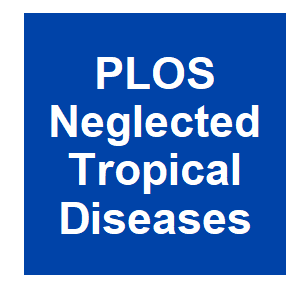
|
Partial masculinization of Aedes aegypti females by conditional expression of NixB. B. Kojin, E. Jakes, J. K. Biedler, Z. Tu and Z. N. Adelman, PLOS Neglected Tropical Diseases, 16:e0010598. 2022.
Here, we report on the conditional expression of Nixin transgenic A. aegypti under the control of the tetracycline-dependent (Tet-off) system, with the goal of establishing repressible sex distortion. A masculinization phenotype was observed in three of the seven transgenic lines ... Keywords: Aedes aegypti, integrated vector management, Mosquito control, radiation, sex sorting, transgenics, wolbachia |

|
CRISPR-Mediated Genome Engineering in Aedes aegyptiR. Sun, M. Li, C. J. McMeniman and O. S. Akbari, piRNA: Methods and Protocols, 2022.
CRISPR-mediated genome engineering technologies have been adapted to a wide variety of organisms with high efficiency and specificity. The yellow fever mosquito, Aedes aegyptiAedes aegypti, is one such organism. It is also responsible for transmitting a wide variety of deadly ... Keywords: Aedes aegypti, integrated vector management, Mosquito control, radiation, sex sorting, transgenics, wolbachia |

|
Sensitivity of wMel and wAlbB Wolbachia infections in Aedes aegypti Puducherry (Indian) strains to heat stress during larval developmentK. Gunasekaran, C. Sadanandane, D. Panneer, A. Kumar, M. Rahi, S. Dinesh, B. Vijayakumar, M. Krishnaraja, S. K. Subbarao and P. Jambulingam, Parasites and Vectors, 15:221. 2022.
BACKGROUND: ICMR-Vector Control Research Centre, Puducherry, India, developed two colonies of Aedes aegypti infected with wMel and wAlbB Wolbacia strains called Ae. aegypti (Pud) lines for dengue control. The sensitivity of wMel and wAlbB strains in Ae. aegypti (Pud) lines to ... Keywords: Aedes aegypti, integrated vector management, Mosquito control, radiation, sex sorting, transgenics, wolbachia |

|
Modifying mosquitoes to suppress disease transmission: Is the long wait over?J. R. Powell, Genetics, 2022.
For more than 50 years it has been a dream of medical entomologists and public health workers to control diseases like malaria and dengue fever by modifying, through genetics and other methods, the arthropods that transmit them to humans. A brief synopsis of the history of ... Keywords: Aedes aegypti, integrated vector management, Mosquito control, radiation, sex sorting, transgenics, wolbachia |
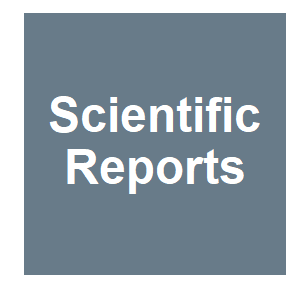
|
Modeling the impact of genetically modified male mosquitoes in the spatial population dynamics of Aedes aegyptiM. R. da Silva, P. H. G. Lugão, F. Prezoto and G. Chapiro, Scientific Reports, 12:9112. 2022.
The mosquito Aedes aegypti is the primary vector of diseases such as dengue, Zika, chikungunya, and yellow fever. Improving control techniques requires a better understanding of the mosquito’s life cycle, including spatial population dynamics in endemic regions. One of the most ... Keywords: Aedes aegypti, integrated vector management, Mosquito control, radiation, sex sorting, transgenics, wolbachia |

|
Self-Deleting Genes Could Control Mosquitoes And Prevent Vector-Borne DiseasesA. Russell, Texas AM TODAY, 2022.
Texas A&M AgriLife Research scientists are testing a technology to make temporary genetic modifications in mosquitoes that self-delete over time. The mechanism to make temporary genetic changes could be important for scientists hoping to modify mosquitoes in ways that help manage ... Keywords: Aedes aegypti, integrated vector management, Mosquito control, radiation, sex sorting, transgenics, wolbachia |

|
Transient Introgression of Wolbachia into Aedes aegypti Populations Does Not Elicit an Antibody Response to Wolbachia Surface Protein in Community MembersE. Lee, T. Hien Nguyen, T. Yen Nguyen, S. Nam Vu, N. Duong Tran, L. Trung Nghia, Q. Mai Vien, T. Dong Nguyen, R. Kriiger Loterio, I. Iturbe-Ormaetxe, H. A. Flores, S. L. O'Neill, D. Anh Dang, C. P. Simmons and J. E. Fraser, Pathogens, 11. 2022.
Wolbachia is an endosymbiotic bacterium that can restrict the transmission of human pathogenic viruses by Aedes aegypti mosquitoes. Recent field trials have shown that dengue incidence is significantly reduced when Wolbachia is introgressed into the local Ae. aegypti population. ... Keywords: Aedes aegypti, integrated vector management, Mosquito control, radiation, sex sorting, transgenics, wolbachia |

|
International shipments of Wolbachia-infected mosquito eggs: towards the scaling-up of World Mosquito Program operationsJ. A. Denton, D. A. Joubert, A. A. Goundar and J. R. L. Gilles, Scientific and Technical Review, 41:91-99. 2022.
The Wolbachia insect control method, employed by the World Mosquito Program (WMP), relies on introgressing Wolbachia through target Aedes aegypti populations to reduce the incidence of dengue. Since 2010, the WMP has been producing Wolbachia-infected mosquitoes at numerous sites ... Keywords: Aedes aegypti, integrated vector management, Mosquito control, radiation, sex sorting, transgenics, wolbachia |

|
Self-eliminating genes tested on mosquitoesA. Russell, AGRILIFE Today, 2022.
Texas A&M AgriLife Research scientists have tested a technology to make temporary genetic modifications in mosquitoes. The modifications self-delete over time. Texas A&M AgriLife Research scientists published an article detailing a mechanism to make temporary genetic alterations ... Keywords: Aedes aegypti, integrated vector management, Mosquito control, radiation, sex sorting, transgenics, wolbachia |

|
Aedes aegypti abundance and insecticide resistance profiles in the applying Wolbachia to eliminate dengue trialW. Tantowijoyo, S. K. Tanamas, I. Nurhayati, S. Setyawan, N. Budiwati, I. Fitriana, I. Ernesia, D. S. Wardana, E. Supriyati, E. Arguni, Y. Meitika, E. Prabowo, B. Andari, B. R. Green, L. Hodgson, E. Rancès, P. A. Ryan, S. L. O'Neill, K. L. Anders, M. R. A, PLOS Neglected Tropical Diseases, 16:e0010284. 2022.
The Applying Wolbachia to Eliminate Dengue (AWED) trial was a parallel cluster randomised trial that demonstrated Wolbachia (wMel) introgression into Ae. aegypti populations reduced dengue incidence. In this predefined substudy, we compared between treatment arms, the relative ... Keywords: Aedes aegypti, integrated vector management, Mosquito control, radiation, sex sorting, transgenics, wolbachia |

|
Temporal Viability of Aedes aegypti and Aedes albopictus Eggs Using Two Hygroscopic Substances as Preservatives under a Sterile Insect Technique (SIT) Program in Southern MexicoE. N. Martínez-García, E. E. Díaz-González, C. F. Marina, J. G. Bond, J. J. Rodríguez-Rojas, G. Ponce-García, R. M. Sánchez-Casas and I. Fernández-Salas, Insects, 13. 2021.
Dengue and other Aedes-borne diseases have dramatically increased over the last decades. The Sterile Insect Technique (SIT) has been successfully used as part of integrated pest strategies to control populations of insect-plant and livestock pests and is currently being tested as ... Keywords: Aedes aegypti, integrated vector management, Mosquito control, radiation, sex sorting, transgenics, wolbachia |

|
Wolbachia: Biological Control Strategy Against Arboviral DiseasesI. Mohanty, A. Rath and R. K. Hazra, Genetically Modified and other Innovative Vector Control Technologies, 2021.
Arboviral diseases like dengue, chikungunya, and Zika are among the major causes of mortality and morbidity in human population. The limited control methods together with lack of antiviral therapies and effective vaccines have paved way for new approaches. One such approach to ... Keywords: Aedes aegypti, integrated vector management, Mosquito control, radiation, sex sorting, transgenics, wolbachia |
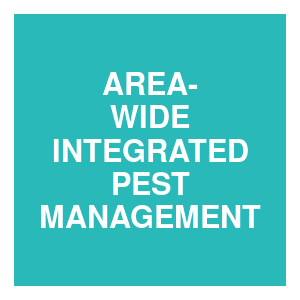
|
Combined sterile insect technique and incompatible insect technique: concept, study design, experience and lessons learned from a pilot suppression trial in ThailandKittayapong, P., AREA-WIDE INTEGRATED PEST MANAGEMENT: Development and Field Application, 2021.
Climate change, rapid global transport and land use change leading to urbanization and agricultural intensification have facilitated disease emergence in vulnerable regions like Southeast Asia, and also the global expansion of vectors and vector-borne diseases into other regions ... Keywords: Aedes aegypti, integrated vector management, Mosquito control, radiation, sex sorting, transgenics, wolbachia |

|
Evaluation of Transgenic Aedes aegypti L. Strain in India: A Friendly MosquitoP. B. Patil, K. K. Yadav, S. K. Dasgupta, U. B. Zehr, S. R. Barwale and B. Char, Genetically Modified and other Innovative Vector Control Technologies, 2021.
Aedes aegypti L. is a primary vector of dengue and is also responsible for transmission of other arboviral diseases including chikungunya, yellow fever, and Zika virus worldwide. India is attributed with as much as 34% of the global burden of dengue infection as per the recent ... Keywords: Aedes aegypti, integrated vector management, Mosquito control, radiation, sex sorting, transgenics, wolbachia |

|
Novel Symbiotic Genome-Scale Model Reveals Wolbachia’s Arboviral Pathogen Blocking Mechanism in Aedes aegyptiN. E. Jiménez, Z. P. Gerdtzen, Á. Olivera-Nappa, J. C. Salgado and C. Conca, mBio, e0156321. 2021.Arboviral diseases such as Zika and Dengue have been on the rise mainly due to climate change, and the development of new treatments and strategies to limit their spreading is needed. The use of Wolbachia as an approach for disease control has motivated new research related to ... Keywords: Aedes aegypti, integrated vector management, Mosquito control, radiation, sex sorting, transgenics, wolbachia |

|
wMel Wolbachia genome remains stable after 7 years in Australian Aedes aegypti field populationsK. R. Dainty, J. Hawkey, L. M. Judd, E. C. Pacidônio, J. M. Duyvestyn, D. S. Gonçalves, S. Y. Lin, T. B. O'Donnell, S. L. O'Neill, C. P. Simmons, K. E. Holt and H. A. Flores, Microbial Genomics, 7. 2021.
Infection of wMel Wolbachia in Aedes aegypti imparts two signature features that enable its application for biocontrol of dengue. First, the susceptibility of mosquitoes to viruses such as dengue and Zika is reduced. Second, a reproductive manipulation is caused that enables wMel ... Keywords: Aedes aegypti, integrated vector management, Mosquito control, radiation, sex sorting, transgenics, wolbachia |
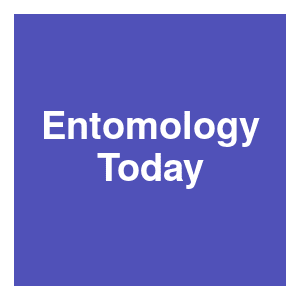
|
Why Genes That Make Mosquitoes Glow Can Help Reduce Vector-Borne DiseaseE. Ricciuti, Entomology Today, 2021.
Fireflies they are not, but glow they do. Not in the dark, to be sure, but mosquitoes genetically modified in the laboratory for an emerging approach to reducing the threat of vector-borne disease look like miniature neon signs when subjected to ultraviolet light. To produce ... Keywords: Aedes aegypti, integrated vector management, Mosquito control, radiation, sex sorting, transgenics, wolbachia |

|
Oxitec Advances Process to Bring Friendly™ Mosquito Technology to California to Help Government Agencies Protect Public HealthOxitec, Oxitec, 2021.
Following successful launch of its Friendly™ Aedes aegypti pilot program in the Florida Keys, Oxitec, the leading developer of biological solutions to control pests that transmit disease, destroy crops and harm livestock, has requested approval from the U.S. Environmental ... Keywords: Aedes aegypti, integrated vector management, Mosquito control, radiation, sex sorting, transgenics, wolbachia |

|
Unique effort underway to control deadly mosquitos in Florida KeysK. Corso and L. Aguirre, Local10.com, 2021.
According to the World Health Organization, more than 50% of the world’s population is under the threat of mosquito borne diseases. In South Florida, the Keys are a hot spot for infection and now the first place in the United States for a novel approach to eradicating these ... Keywords: Aedes aegypti, integrated vector management, Mosquito control, radiation, sex sorting, transgenics, wolbachia |

|
Manipulated Mosquitoes Cut Dengue by 77%T. Hayes, Healthcare Packaging, 2021.Dengue, a mosquito-borne viral disease, wasn’t that common 50 years ago. In fact, only nine countries had severe outbreaks. But since then, it’s been on a steady incline to the point that there are now 400 million infections a year that contribute to 22,000 deaths. ... Keywords: Aedes aegypti, integrated vector management, Mosquito control, radiation, sex sorting, transgenics, wolbachia |

|
Dengue fever: Upstaged but not outmatched by COVID-19C. E. Baclig, INQUIRER.NET, 2021.
Science has made gains in the war on dengue and other diseases that mosquitoes carry, like malaria.One of these is the World Mosquito Program (WMP), a non-profit initiative that aims to protect the global community from mosquito-borne viral diseases, by deploying a natural ... Keywords: Aedes aegypti, integrated vector management, Mosquito control, radiation, sex sorting, transgenics, wolbachia |

|
Dengue Infections Can Be Sharply Reduced With Wolbachia BacteriaJ. Stone, Medscape, 2021.
A modestly titled new study released in the New England Journal of Medicine belies the extraordinary 77% protective efficacy reported for preventing dengue infections with Wolbachia-infected Aedes aegypti mosquitoes. A cluster-randomized clinical trial, the AWED ("Applying ... Keywords: Aedes aegypti, integrated vector management, Mosquito control, radiation, sex sorting, transgenics, wolbachia |

|
Making mosquitoes to fight mosquitoes to prevent dengueA. George, Times of India, 2021.
In 2017, Delhi Chief Minister Arvind Kejriwal tweeted that the national capitl needed to be made mosquito-free. The same year, his Kerala counterpart, Pinaray Vijayan, called a three-day state-wide cleanliness drive as hospitals filled with genue patients. Keywords: Aedes aegypti, integrated vector management, Mosquito control, radiation, sex sorting, transgenics, wolbachia |

|
Dengue Fever Cut Down by 77% With Groundbreaking Bacteria-Armed MosquitoesM. Davis, The Science Times, 2021.
Scientists found that dengue fever cases have decreased by 77% in a groundbreaking trial that took place in Yogyakarta City, Indonesia. They used Wolbachia-infected mosquitoes that reduced their ability to spread the dengue fever. The team at the World Mosquito Program said that ... Keywords: Aedes aegypti, integrated vector management, Mosquito control, radiation, sex sorting, transgenics, wolbachia |

|
Mosquito ‘bacteria hack’ nearly eliminates dengue fever and could save millions of livesA. Wilkins, METRO, 2021.
Mosquitoes infected with a ‘miraculous’ bacteria have been shown to reduce dengue fever cases by 77%, in a groundbreaking new study. Scientists released mosquitoes infected with ‘Wolbachia’ bacteria into the Indonesian city of Yogyakarta – but only in certain zones. In ... Keywords: Aedes aegypti, integrated vector management, Mosquito control, radiation, sex sorting, transgenics, wolbachia |

|
‘Miraculous’ mosquito hack cuts dengue by 77%J. Gallagher, BBC, 2021.
Dengue fever cases have been cut by 77% in a "groundbreaking" trial that manipulates the mosquitoes that spread it, say scientists. They used mosquitoes infected with "miraculous" bacteria that reduce the insect's ability to spread dengue. The trial took place in Yogyakarta city, ... Keywords: Aedes aegypti, integrated vector management, Mosquito control, radiation, sex sorting, transgenics, wolbachia |

|
Modified mosquitoes reduce dengue cases by 77% in Indonesia experimentM. Fox, CNN, 2021.
An experiment to infect mosquitoes with bacteria that stop them from transmitting viruses appears to have helped reduced the spread of deadly dengue virus in Indonesia, researchers reported Wednesday. The modified mosquitoes thrived for three years, and cases of dengue were ... Keywords: Aedes aegypti, integrated vector management, Mosquito control, radiation, sex sorting, transgenics, wolbachia |

|
Efficacy of Wolbachia-Infected Mosquito Deployments for the Control of DengueA. Utarini, C. Indriani, R. A. Ahmad, W. Tantowijoyo, E. Arguni, M. R. Ansari, E. Supriyati, D. S. Wardana, Y. Meitika, I. Ernesia, I. Nurhayati, E. Prabowo, B. Andari, B. R. Green, L. Hodgson, Z. Cutcher, E. Rancès, P. A. Ryan, S. L. O’Neill, S. M. Dufau, New England Journal of Medicine, 384:2177-2186. 2021.
BACKGROUND Aedes aegypti mosquitoes infected with the wMel strain of Wolbachia pipientis are less susceptible than wild-type A. aegypti to dengue virus infection. METHODS We conducted a cluster-randomized trial involving releases of wMel-infected A. aegypti mosquitoes for the ... Keywords: Aedes aegypti, integrated vector management, Mosquito control, radiation, sex sorting, transgenics, wolbachia |

|
Mosquitoes armed with virus-fighting bacteria sharply curb dengue infections, hospitalizationsK. Servick, Science, 2021.
A strategy for fighting dengue fever with bacteria-armed mosquitoes has passed its most rigorous test yet: a large, randomized, controlled trial. Researchers reported today dramatic reductions in rates of dengue infection and hospitalization in areas of an Indonesian city where ... Keywords: Aedes aegypti, integrated vector management, Mosquito control, radiation, sex sorting, transgenics, wolbachia |

|
Study demonstrates ‘exciting potential’ of Wolbachia-infected mosquitoes to control dengueG. Gallagher, Healio, 2021.
The release of Wolbachia-infected mosquitoes led to a 77% reduction in the incidence of symptomatic dengue in an Indonesian city, according to researchers, who said the same approach could be used to fight other mosquito-borne diseases. The study tested a strain of Wolbachia ... Keywords: Aedes aegypti, integrated vector management, Mosquito control, radiation, sex sorting, transgenics, wolbachia |

|
Genetic engineering may help control disease-carrying mosquitoesAnonymous, The Economist, 2021.
EVERY YEAR, hundreds of millions of people catch mosquito-borne diseases like malaria and dengue fever. Hundreds of thousands die. Drug treatments are imperfect. And, despite decades of effort, vaccines have, for many of these diseases, proved tricky to perfect. Better, then, to ... Keywords: Aedes aegypti, integrated vector management, Mosquito control, radiation, sex sorting, transgenics, wolbachia |

|
Genetically Modified Mosquitoes: What to KnowN. Pathak, WebMD, 2021.
It sounds like something out of a movie: a biotech company releases genetically modified mosquitoes into the wild. But this is the real deal, a test that’s been done in a handful of countries around the world and that is underway in the U.S. Scientists hope these bugs can help ... Keywords: Aedes aegypti, integrated vector management, Mosquito control, radiation, sex sorting, transgenics, wolbachia |

|
Sterilizing skeeters using CRISPR/Cas9H. Tasoff, Phy Org, 2021.
Mosquitoes are one of humanity's greatest nemeses, estimated to spread infections to nearly 700 million people per year and cause more than one million deaths. UC Santa Barbara Distinguished Professor Craig Montell has made a breakthrough in one technique for controlling ... Keywords: Aedes aegypti, integrated vector management, Mosquito control, radiation, sex sorting, transgenics, wolbachia |

|
Edit, undo: Temporary gene editing could help solve the mosquito problemL. Dormehl, digitaltrends, 2020.
But if SyFy original movies have taught us anything, it’s that genetically tweaking organisms and then releasing them can… well, not go quite according to plan.With that in mind, a new Texas A&M AgriLife Research project seeks to test out genetic modifications of mosquitos ... Keywords: Aedes aegypti, integrated vector management, Mosquito control, radiation, sex sorting, transgenics, wolbachia |

|
The Antiviral Small-Interfering RNA Pathway Induces Zika Virus Resistance in Transgenic Aedes aegyptiA. E. Williams, I. Sanchez-Vargas, W. R. Reid, J. Y. Lin, A. W. E. Franz and K. E. Olson, Viruses, 12:18. 2020.
We used CRISPR/Cas9 to re-target a previously characterized locus (Chr2:321382225) and engineered mosquitoes expressing an inverted repeat (IR) dsRNA against the NS3/4A region of the ZIKV genome. Small RNA analysis revealed that the IR effector triggered the mosquito's siRNA ... Keywords: Aedes aegypti, integrated vector management, Mosquito control, radiation, sex sorting, transgenics, wolbachia |

|
Split drive killer-rescue provides a novel threshold-dependent gene driveM. P. Edgington, T. Harvey-Samuel and L. Alphey, Scientific Reports, 10:13. 2020.
We show that although end-joining repair mechanisms may cause the system to break down, under certain conditions, it should persist over time scales relevant for genetic control programs. The potential of such a system to provide localised population suppression via sex ratio ... Keywords: Aedes aegypti, integrated vector management, Mosquito control, radiation, sex sorting, transgenics, wolbachia |

|
Researchers convert female mosquitoes to nonbiting males with implications for mosquito controlVirginia Tech, ScienceDaily, 2020.
Researchers convert female mosquitoes to nonbiting males with implications for mosquito control Virginia Tech researchers have proven that a single gene can convert female Aedes aegypti mosquitoes into fertile male mosquitoes and identified a gene needed for male mosquito ... Keywords: Aedes aegypti, integrated vector management, Mosquito control, radiation, sex sorting, transgenics, wolbachia |

|
GMO Mosquitoes to be launched in FloridaAdministration, Editorials 360, 2020.
In June 2020, the Florida Division of Agriculture and Shopper Providers gave the go-ahead to a plan to launch thousands and thousands of genetically engineered mosquitoes within the Florida Keys this summer time to battle mosquito-borne diseases.1 The plan follows the EPA’s ... Keywords: Aedes aegypti, integrated vector management, Mosquito control, radiation, sex sorting, transgenics, wolbachia |

|
Florida gives approval to the plan of releasing genetically modified mosquitoes.V. Dalmia, The Andoverleader, 2020.
Mosquitoes have always been a huge problem for Florida residents. They are even more problematic in the Florida Key Region. It has even a dedicated mosquito department that is assigned with the task of controlling over 40 species of mosquitoes. But as technology progresses, we ... Keywords: Aedes aegypti, integrated vector management, Mosquito control, radiation, sex sorting, transgenics, wolbachia |

|
Company Receives Permit To Release Swarm Of Genetically Modified Mosquitoes In FloridaI. Monzon, International Business Times, 2020.
A federal agency has provided a biotech company with the proper permit to release a swarm of genetically altered mosquitoes in Florida as a way to curb the spread of diseases in the area. If the company receives the additional approvals, it might begin releasing the mosquitoes ... Keywords: Aedes aegypti, integrated vector management, Mosquito control, radiation, sex sorting, transgenics, wolbachia |

|
Mosquito-Borne Diseases Emergence/Resurgence and How to Effectively Control It BiologicallyH. Dahmana and O. Mediannikov, Pathogens, 9:26. 2020.
Deadly pathogens and parasites are transmitted by vectors and the mosquito is considered the most threatening vector in public health, transmitting these pathogens to humans and animals. We are currently witnessing the emergence/resurgence in new regions/populations of the most ... Keywords: Aedes aegypti, integrated vector management, Mosquito control, radiation, sex sorting, transgenics, wolbachia |

|
Synthetically engineered mosquitos could neutralize dengue virus infectionL. Woolfe, Biotechniques, 2020.
Dengue virus infection can be severe and life threatening. New research has developed an improved approach to controlling this deadly infection. Keywords: Aedes aegypti, integrated vector management, Mosquito control, radiation, sex sorting, transgenics, wolbachia |

|
Mosquitoes genetically modified to combat dengueDowntoearth, Down To Earth, 2020.
For the first time mosquitoes have been engineered to fight all 4 known types of dengue Keywords: Aedes aegypti, integrated vector management, Mosquito control, radiation, sex sorting, transgenics, wolbachia |
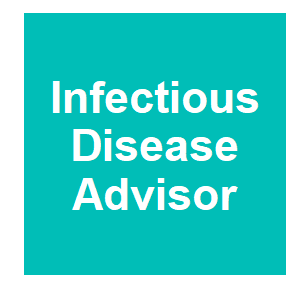
|
Genetically Modified Mosquitos Neutralize Dengue VirusN. P. Dyal, Infectious Disease Advisor, 2020.
Researchers at the University of California San Diego have identified a target gene in mosquitos that renders the insects completely refractory to all 4 serotypes of the dengue virus and thus, incapable of transmitting the virus to humans, according to study results published in ... Keywords: Aedes aegypti, integrated vector management, Mosquito control, radiation, sex sorting, transgenics, wolbachia |

|
Genetically modified mosquitoes resist all dengue viruses, researchers findB. Burton, C|NET, 2020.
This new kind of mosquito can't spread any form of the deadly disease. Keywords: Aedes aegypti, integrated vector management, Mosquito control, radiation, sex sorting, transgenics, wolbachia |

|
Genetically engineered mosquitoes resist spreading any form of dengueK. Servick, Science, 2020.
Recover from dengue once, and you’re not necessarily free and clear. The mosquito-borne disease marked by fever, rash, and debilitating pain results from any of four genetically distinct versions of the dengue virus. Previously infected people who get hit with a second of these ... Keywords: Aedes aegypti, integrated vector management, Mosquito control, radiation, sex sorting, transgenics, wolbachia |

|
Genetically engineered mosquitoes halt Dengue spreadL. Thomas, New Medical Life Sciences, 2020.
A new study published in the journal PLOS Pathogens in January 2020 reports the development of mosquitoes that have been genetically modified to resist infection by several types of the dengue virus. This is the first time ever that all types of the virus have been targeted by ... Keywords: Aedes aegypti, integrated vector management, Mosquito control, radiation, sex sorting, transgenics, wolbachia |

|
Researchers Genetically Modify First Batch Of Mosquitoes Resistant To All Four Types Of DengueM. Dapcevich, IFL Science, 2020.
An international team of researchers have synthetically engineered a breed of mosquitos that are resistant to all four types of the dengue virus for the first time, a feat they say may someday suppress the disease and stop its transmission to humans. Keywords: Aedes aegypti, integrated vector management, Mosquito control, radiation, sex sorting, transgenics, wolbachia |

|
Genetically engineered mosquitoes are immune to all strains of dengue virus for first timeG. Weule, ABC News Online, 2020.
Locked in a secure lab near Melbourne is the newest addition in the fight against dengue: genetically engineered mosquitoes that are resistant to all strains of the potentially deadly virus. Keywords: Aedes aegypti, integrated vector management, Mosquito control, radiation, sex sorting, transgenics, wolbachia |

|
Mosquitoes resistant to all types of dengue virus engineeredN. Lavars, New Atlas, 2020.
Last year, scientists at Australia's Commonwealth Scientific and Industrial Research Organisation (CSIRO) made a big breakthrough, engineering mosquitoes that break the chain of Zika virus transmission. But they did so with multiple targets in mind, with the mosquito in question, ... Keywords: Aedes aegypti, integrated vector management, Mosquito control, radiation, sex sorting, transgenics, wolbachia |

|
Broad dengue neutralization in mosquitoes expressing an engineered antibodyA. Buchman, S. Gamez, M. Li, I. Antoshechkin, H.-H. Li, H.-W. Wang, C.-H. Chen, M. J. Klein, J.-B. Duchemin, J. E. Crowe, Jr., P. N. Paradkar and O. S. Akbari, PLOS Pathogens, 16:e1008103. 2020.
Author summary With limited success of traditional vector control methods to curb dengue infections and more than half of the world’s population still at risk, there is a need for novel strategies to reduce its impact on public health. Recent advances in genetic technologies ... Keywords: Aedes aegypti, integrated vector management, Mosquito control, radiation, sex sorting, transgenics, wolbachia |

|
Development of a confinable gene drive system in the human disease vector Aedes aegyptiM. Li, T. Yang, N. P. Kandul, M. Bui, S. Gamez, R. Raban, J. Bennett, H. M. Sánchez C, G. C. Lanzaro, H. Schmidt, Y. Lee, J. M. Marshall and O. S. Akbari, eLife, 9:e51701. 2020.
Aedes aegypti is the principal mosquito vector for many arboviruses that increasingly infect millions of people every year. With an escalating burden of infections and the relative failure of traditional control methods, the development of innovative control measures has become ... Keywords: Aedes aegypti, integrated vector management, Mosquito control, radiation, sex sorting, transgenics, wolbachia |

|
Antiviral effectors and gene drive strategies for mosquito population suppression or replacement to mitigate arbovirus transmission by Aedes aegyptiA. E. Williams, A. W. E. Franz, W. R. Reid and K. E. Olson, Insects, 11:1-18. 2020.
The mosquito vector Aedes aegypti transmits arthropod-borne viruses (arboviruses) of medical importance, including Zika, dengue, and yellow fever viruses. Controlling mosquito populations remains the method of choice to prevent disease transmission. Novel mosquito control ... Keywords: Aedes aegypti, integrated vector management, Mosquito control, radiation, sex sorting, transgenics, wolbachia |

|
Malaysia Wolbachia trials: Battling dengue and other mosquito-borne viruses, 2019.Keywords: Aedes aegypti, integrated vector management, Mosquito control, radiation, sex sorting, transgenics, wolbachia |
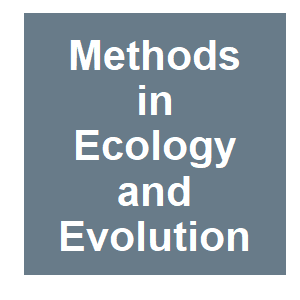
|
MGDrivE: A modular simulation framework for the spread of gene drives through spatially-explicit mosquito populationsSánchez C, HMW, Sean L.; Bennett, Jared B.; Marshall, John M., Methods in Ecology and Evolution, 10:1-24. 2019.
Malaria, dengue, Zika, and other mosquito-borne diseases continue to pose a major global health burden through much of the world, despite the widespread distribution of insecticide-based tools and antimalarial drugs. The advent of CRISPR/Cas9-based gene editing and its ... Keywords: Aedes aegypti, integrated vector management, Mosquito control, radiation, sex sorting, transgenics, wolbachia |

|
Towards the genetic control of invasive speciesHarvey-Samuel, TA, T.; Alphey, L., Biological Invasions, 19:1683-1703. 2017.
Invasive species remain one of the greatest threats to global biodiversity. Their control would be enhanced through the development of more effective and sustainable pest management strategies. Recently, a novel form of genetic pest management (GPM) has been developed in which ... Keywords: Aedes aegypti, integrated vector management, Mosquito control, radiation, sex sorting, transgenics, wolbachia |

|
Cheating evolution: engineering gene drives to manipulate the fate of wild populationsChamper, JB, A.; Akbari, O. S., Nature Reviews Genetics, 17:146-159. 2016.
Engineered gene drives - the process of stimulating the biased inheritance of specific genes - have the potential to enable the spread of desirable genes throughout wild populations or to suppress harmful species, and may be particularly useful for the control of vector-borne ... Keywords: Aedes aegypti, integrated vector management, Mosquito control, radiation, sex sorting, transgenics, wolbachia |

|
Regulatory experience and challenges for the release of GM insectsBeech, C, Journal Fur Verbraucherschutz Und Lebensmittelsicherheit-Journal of Consumer Protection and Food Safety, 9:S71-S76. 2014.
Genetically modified (GM) insects are a potentially valuable new tool for the biological control of insect pests of humans, animals and plants. Considerable progress has been made recently in transfer of GM insects from the laboratory to release and evaluation in the environment. ... Keywords: Aedes aegypti, integrated vector management, Mosquito control, radiation, sex sorting, transgenics, wolbachia |

|
Requirements for effective malaria control with homing endonuclease genesDeredec, AG, H. C. J.; Burt, A., Proceedings of the National Academy of Sciences of the United States of America, 108:e874-e880. 2011.
Malaria continues to impose a substantial burden on human health. We have previously proposed that biological approaches to control the mosquito vector of disease could be developed using homing endonuclease genes (HEGs), a class of selfish or parasitic gene that exists naturally ... Keywords: Aedes aegypti, integrated vector management, Mosquito control, radiation, sex sorting, transgenics, wolbachia |

Contact
David O’Brochta
Foundation for the
National Institutes of Health
geneconvenevi@fnih.org
RSS

